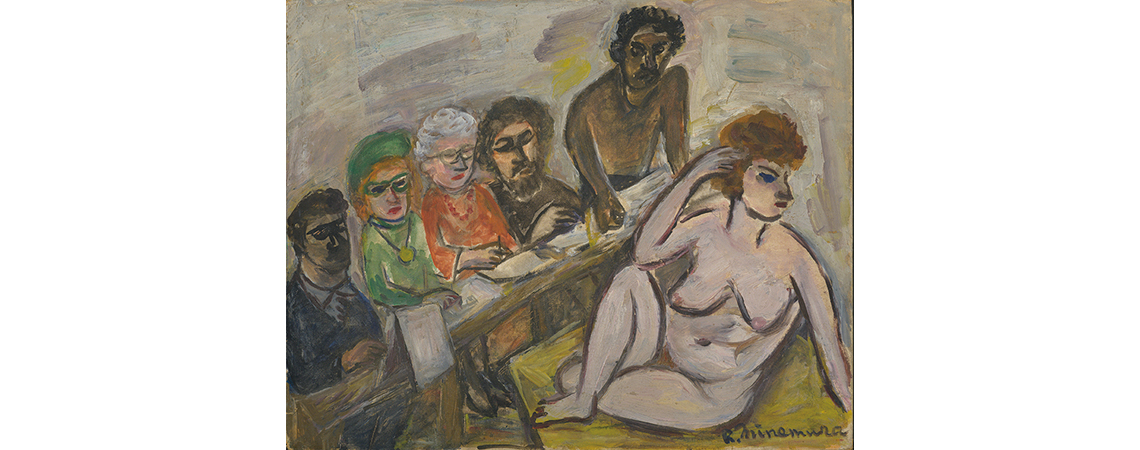前期2/1[木]―13[火]
後期2/15[木]―28[水]
niigata eya exhibition 665
前期
昨年11月上旬、新潟絵屋は展示室をスタジオに変え、峰村リツ子が最後に手元に残した油絵を撮影していた。この2月はその413点の中から、前期と後期で企画者をわけそれぞれが出品作品をセレクトする。
前期は、わたしが撮影に立ち合った中で特にこころに残った絵を選ぶことにした。人物、静物、風景、いろんな絵があって、そのどれもが大らかで潔く、清々しい。「かあさん」の絵を保管してきた四女のいづみさんにも展覧会を見てもらえることがうれしい。(企画者:井上美雪)
The First Half
In early November of last year, Niigata Eya turned its exhibition room into a studio and took pictures of the Ritsuko Minemura oil painting left by her. This February, from among the 413 paintings, the exhibition planners will select works for the first and second halves of an exhibition.
For the first half of the exhibition, I decided to select paintings that particularly stuck in my mind from among those that were present during the photo shoot. There are various paintings of people, still life, and landscapes, all of which are easygoing, graceful, and refreshing. I am glad that Izumi, her fourth daughter, who had preserved her “Ka-san’s” (mother’s) paintings, will be able to see the exhibition. (Exhibition Planner: Miyuki Inoue)
後期
峰村リツ子の絵の多くが裸婦だ(裸夫もある)。これらに魅了されて、自分の画廊とエッセイ「気まぐれ美術館」で紹介した洲之内徹は、なんともふしぎな人体のとらえ方をキュビスムやフォービスムと結びつけて考えようとしていた。
視点を変え、日本美術史の側から眺めてはどうだろう。浮世絵や中世の風俗画に描かれた人々は西洋美術的にはへんてこで、歪んでいると評されてきた。けれどその歪みこそ、過去の絵師たちが同時代の営みを見つめた生きた好奇心を語る声なのだ。
峰村は娘たちを訪ねてよく行ったニューヨークの、デッサンスクールで裸婦を描いたらしい。彼女はそこではいつも和服姿だった。戦国・江戸期の絵師が20世紀アメリカに舞い降りた図が浮かぶ。そんな日本人絵師が、現代風俗「ヌードデッサン会」に好奇のまなこを光らせた絵、として見ると、なんだか楽しいではないか。(企画者:大倉宏)
The Second Half
Many of Ritsuko Minemura’s paintings are female nudes (there are also male nudes). Toru Sunouchi, who was fascinated by these paintings and introduced them in his gallery and in his essay “Kimagure Bijutsukan” (Capricious Art Museum), was attempting to ponder the connection of this mysterious way of portraying the human body with cubism and fauvism.
How about changing the perspective and looking at it from the standpoint of Japanese art history? People depicted in ukiyoe and medieval genre paintings had been described as strange and distorted from the perspective of Western art. Yet it is this distortion that is the voice that tells of the living curiosity of the eshi (vocational painter) of the past, as they looked at the lives of their own time. Minemura apparently had painted nudes at a drawing school in New York City, where she often visited her daughters. She was always dressed in kimono there. A picture of an eshi from the Warring States and Edo periods descending to the ground in America during the 20th century comes to mind. It is somewhat amusing to think of her paintings as a Japanese eshi‘s curious glances at the “nude sketching session,” which is a contemporary custom. (Exhibition Planner: Hiroshi Okura)
PHOTO(上): 題不詳 油彩/キャンバス 制作年不詳 45.5×33.3cm
峰村リツ子(みねむら りつこ)
1907年新潟市生まれ。生家は沼垂で味噌醸造業を営んでいた。10代後半に東京へ行き、太平洋美術研究所で油絵を学ぶ。野口弥太郎、里見勝蔵、児島善三郎らの指導を受ける。女性の油絵画家の草分けの一人。戦前は1930年協会展、二科展、独立美術協会に出品。34年三岸節子、桜井浜江、佐川敏子らとグループ女艸会を結成。戦後は女流画家協会、自由美術家協会等で発表後、 70歳を越えてからは主に個展で発表。93年朝日ギャラリーで自薦展を開催。95年没。
Ritsuko Minemura
Born in 1907 in Niigata City. She was from Nuttari where her family ran a miso making business. In her late teens she went to Tokyo, where she studied oil painting at the Taiheiyo Art Association. Yataro Noguchi, Katsuzo Satomi, and Zenzaburo Kojima were her teachers. Minemura is one of the pioneers of Japan’s female oil painters. Before the war in 1930 she exhibited at the Kyokai Exhibition, the Nika Art Exhibition, and the Dokuritsu Bijutsu Kyokai. In 1934, she formed the group Josokai with Setsuko Migishi, Hamae Sakurai,and Toshiko Sagawa. After the war, she exhibited her works at the Women’s Artist Association, at the Jiyu Bijutsuka Association, and at other venues. After turning 70, she mainly exhibited her works at solo shows. In 1993 she displayed self-selected artwork at the Asahi Gallery. She died in 1995.
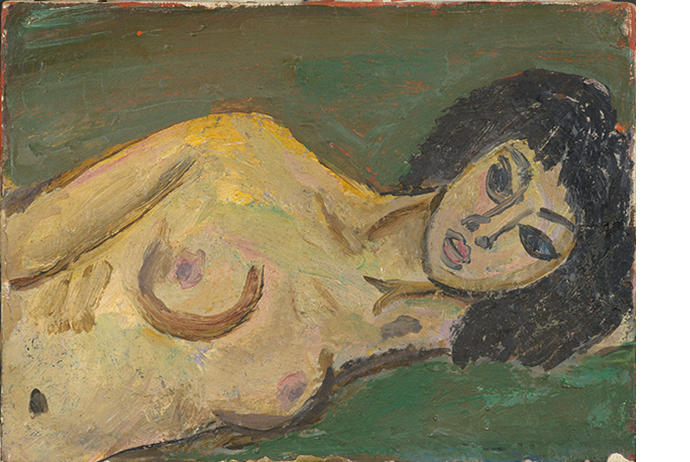
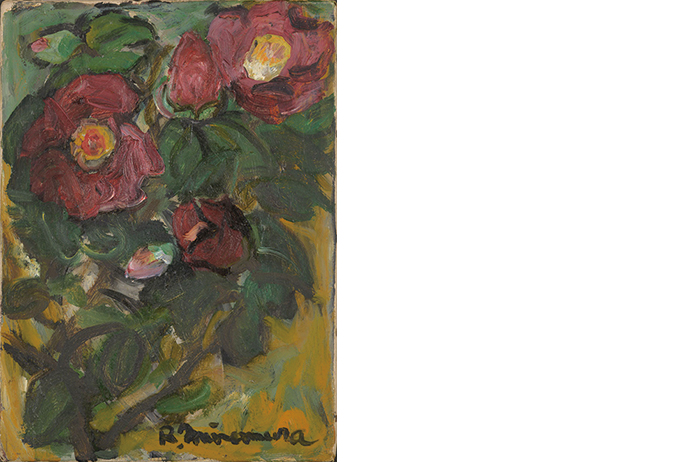
PHOTO: 作品はいずれも題・制作年不詳 油彩/キャンバス F4
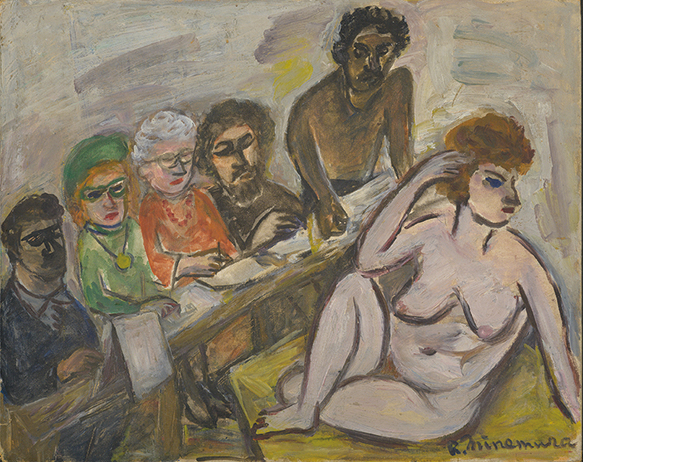
PHOTO: 題不詳 油彩/ボード 制作年不詳 41.0×53.0cm
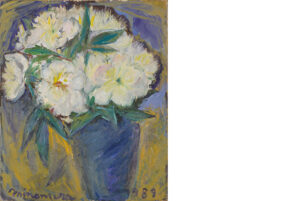
PHOTO: 題不詳 油彩/キャンバス 1989年 45.5×37.8cm
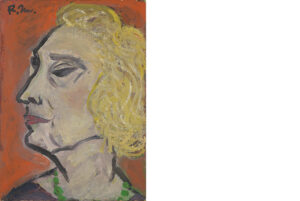
PHOTO: 題不詳 油彩/キャンバス 制作年不詳 33.3×24.2cm
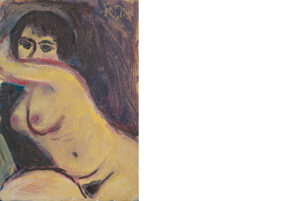
PHOTO: 題不詳 油彩/キャンバス 制作年不詳 22.7×15.8cm
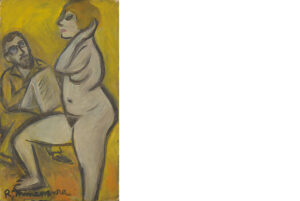
PHOTO: 題不詳 油彩/キャンバス 制作年不詳 41.0×27.3cm

